Go Beyond Line Charts
At Locus Technologies, we are committed to providing cutting-edge visualization tools to enhance your data analysis experience.
At Locus Technologies, we are committed to providing cutting-edge visualization tools to enhance your data analysis experience.
In today’s world, businesses across various industries face the challenge of managing and reporting environmental data efficiently.
When looking for a GHG reporting program, there is one element that is typically overlooked. This short video gives us more insight.
Wouldn’t it be great if you could just get compliance software with much less time and effort? That is where Locus’ pre-configured apps come in. They are market tested and fully featured yet still allow for flexibility/configurability in key areas such as: Adding new data fields to capture industry specific information. Adding or removing document […]
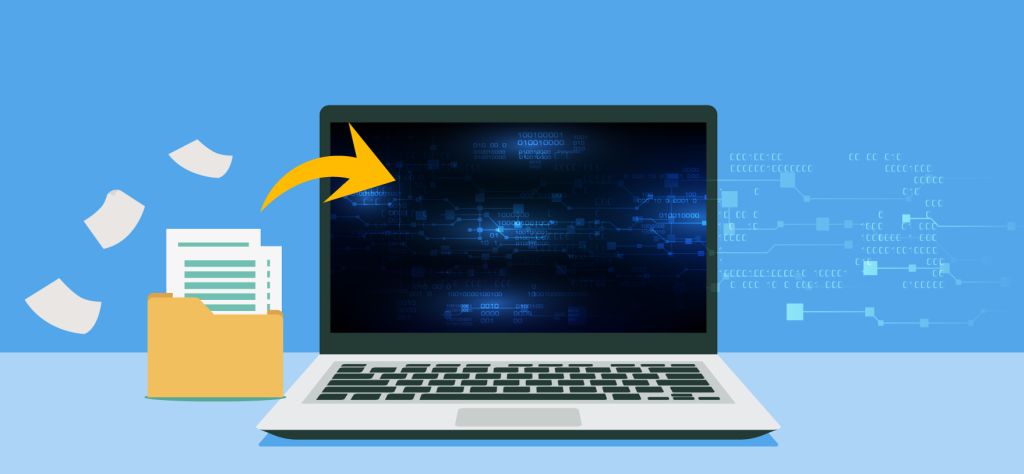
I am constantly reminded by the number of calls we receive, that no matter how robust a SCADA and HMI system is, there is always a requirement for in-field O&M verifications and documentation. It’s almost universal and spans a myriad of industries, large and small, the need to monitor and record thousands of periodic (daily/per shift/weekly, etc.) routine readings/recordings at a prescribed frequency often recorded on pen to paper field forms. The same processes sometimes use “template” spreadsheets for data collection that are then emailed/placed on shared file servers or otherwise sent to some central location for review and post-processing. These processes are antiquated and subject to data quality and record-keeping challenges.
It’s time for an upgrade!
Electronic forms are great for collecting data and almost every business entity has built such forms in spreadsheets, word processing, or simple databases to collect the information. In addition, there is a software category of form builders, and they can certainly build forms. The question becomes is it a good fit to solve your business process issues?
Most customers have more sophisticated needs than simply collecting information on one or more custom forms – they want to do something with all the information collected far beyond what simple form builder tools can provide. Even customers with sophisticated spreadsheet forms, can’t manage them as they multiply exponentially or their Excel gurus retire.
Locus Platform is a configurable platform with standard applications that are easy to configure to customers’ unique requirements. One of its many strengths is its powerful form builder capable of creating simple or complex forms with simple or sophisticated logic. So, for customers looking to move from paper and spreadsheet templates, it’s an excellent option to consider, especially if you require more than a simple “fill in the blank” form for transmittal using mobile devices. Best of all, the data are securely stored in a database structure for reporting and alternative business uses and analyses, compared to the almost impossible management of hundreds of spreadsheets or paper forms.
If you still rely on paper forms and template spreadsheets and are ready to streamline your process and enhance the value of your data, give us a call and we can show you a range of options that will retire the paper forms for good!
Locus’ Air Quality app is designed to integrate with data sources to seamlessly calculate air emissions monthly or annually.
Locus Platform is the preeminent on-demand application development platform for EHS, ESG, and beyond, supporting many organizations and government institutions. Individual enterprises and governmental organizations trust Locus’s SaaS Platform to deliver robust, reliable, Internet-scale applications. The foundation of Locus Platform (LP) is a metadata-driven software architecture that enables multitenant applications. This unique technology, a significant differentiator between Locus and its competitors, makes the Locus Platform fast, scalable, and secure for any application. What do we mean by metadata-driven? If you look up metadata-driven development on the web, you find the following:
“The metadata-driven model for building applications allows an Enterprise to deploy multiple applications on the same hosting infrastructure easily. Since multiple applications share the same Designer and Rendering Engine, the only difference is the metadata created uniquely for each application.”
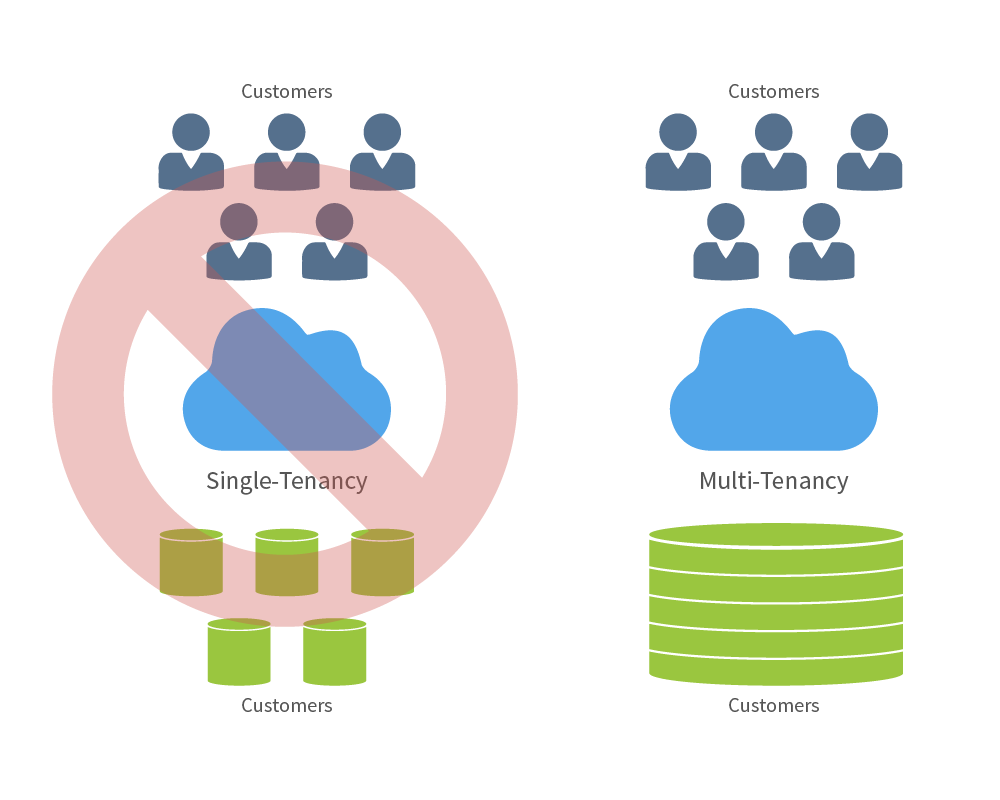
The Triumph of the Multitenant SaaS model, which Locus brings to the EHS/ESG industry.
In the case of LP, it is the Designer and Rendering Engine cited in this definition. All LP customers share this engine and use it to create their custom applications. These applications may consist of dashboards, forms to enter data, plots, reports, and so forth, all designed to meet a set of requirements. Instructions (metadata) stored in a database tell the engine how to build these entities, the total of which form a client-designed application.

Locus Platform’s evolution to the leading EHS and ESG Platform.
History has shown that every so often, incremental advances in technology and changes in business models create significant paradigm shifts in the way software applications are designed, built, and delivered to end-users. The invention of personal computers (PCs), computer networking, and graphical user interfaces (UIs) gave rise to the adoption of client/server applications over expensive, inflexible, character-mode mainframe applications. And today, reliable broadband Internet access, service-oriented architectures (SOAs), and the cost inefficiencies of managing dedicated on-premises applications are driving a transition toward the delivery of decomposable, collected, shared, Web-based services called software as a service (SaaS).
With every paradigm shift comes a new set of technical challenges, and SaaS is no different. Existing application frameworks are not designed to address the unique needs of SaaS. This void has given rise to another new paradigm shift, namely platform as a service (PaaS). Hosted application platforms are managed environments specifically designed to meet the unique challenges of building SaaS applications and deliver them more cost-efficiently.
The focus of Locus Platform is multitenancy, a fundamental design approach that dramatically improves the manageability of EHS and ESG SaaS applications. Locus Platform is the world’s first PaaS built from scratch to take advantage of the latest software developments for building EHS, ESG, sustainability, and other applications. Locus Platform delivers turnkey multitenancy for Internet-scale applications.
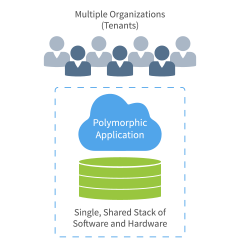
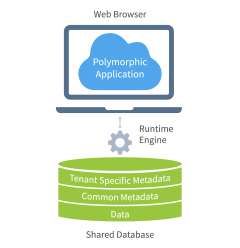
A single shared software and hardware stack across all customers.
The same applies to many different sets of users; all Locus’ LP applications are multitenant rather than single-tenant. Whereas a traditional single-tenant application requires a dedicated group of resources to fulfill the needs of just one organization, a multitenant application can satisfy the needs of multiple tenants (companies or departments within a company, etc.) using the hardware resources and staff needed to manage just a single software instance. A multitenant application cost-efficiently shares a single stack of resources to satisfy the needs of multiple organizations.
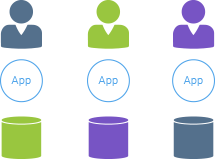
Single-tenant apps are expensive for the vendor and the customer.
Tenants using a multitenant service operate in virtual isolation: Organizations can use and customize an application as though they each have a separate instance. Yet, their data and customizations remain secure and insulated from the activity of all other tenants. The single application instance effectively morphs at runtime for any particular tenant at any given time.
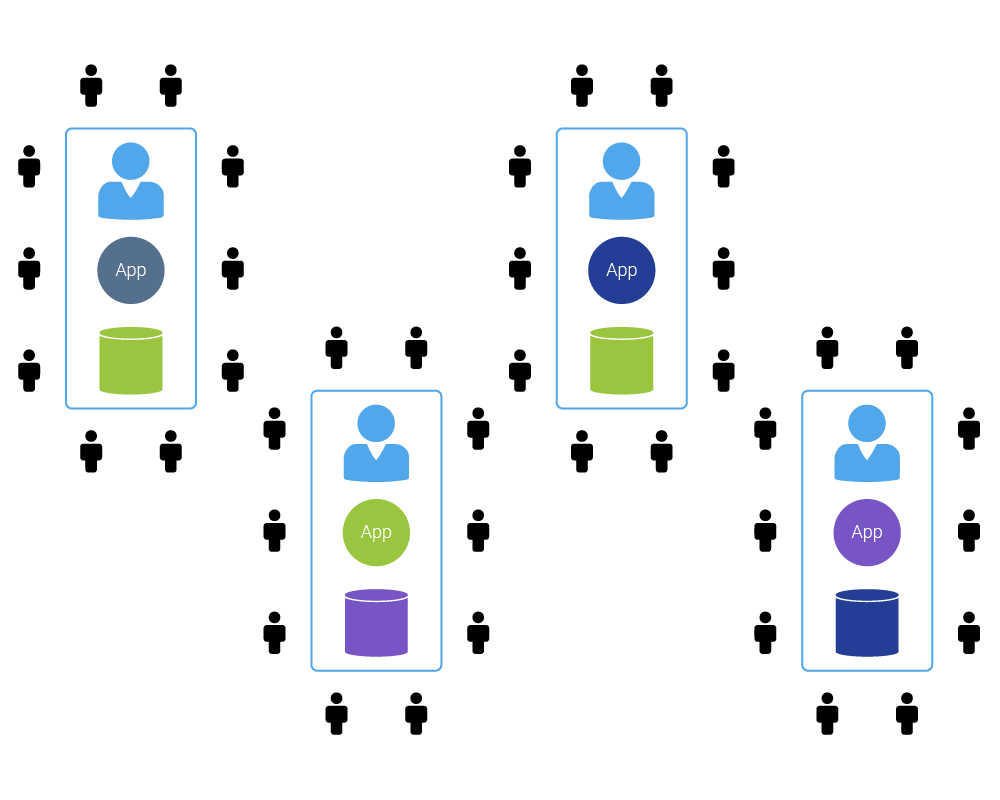
Single-tenant apps create waste
Multitenancy is an architectural approach that pays dividends to application providers (Locus) and users (Locus customers). Operating just one application instance for multiple organizations yields tremendous economy of scale for the provider. Only one set of hardware resources is necessary to meet the needs of all users, a relatively small, experienced administrative staff can efficiently manage only one stack of software and hardware, and developers can build and support a single code base on just one platform (operating system, database, etc.) rather than many. The economics afforded by multitenancy allows the application provider to, in turn, offer the service at a lower cost to customers—everyone involved wins.
Some attractive side benefits of multitenancy are improved quality, user satisfaction, and customer retention. Unlike single-tenant applications, which are isolated silos deployed outside the reach of the application provider, a multitenant application is one large community that the provider itself hosts. This design shift lets the provider gather operational information from the collective user population (which queries respond slowly, what errors happen, etc.) and make frequent, incremental improvements to the service that benefits the entire user community at once.
Two additional benefits of a multitenant platform-based approach are collaboration and integration. Because all users run all applications in one space, it is easy to allow any user of any application varied access to specific data sets. This capability simplifies the effort necessary to integrate related applications and the data they manage.
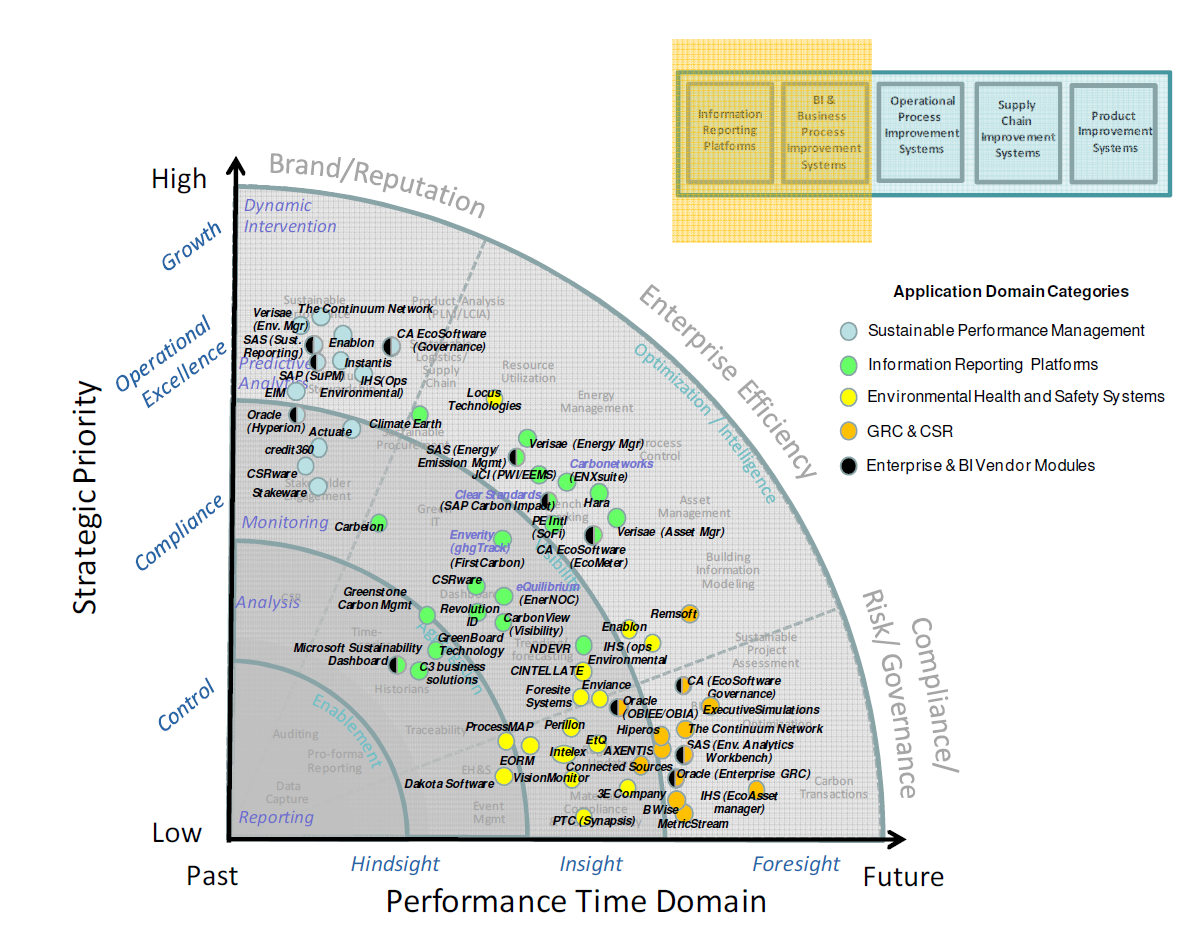
Gartner recognized the power of the Locus Platform in their early research.
This is the third post highlighting the evolution of Locus Technologies over the past 25 years. The first two can be found here and here. This series continues with Locus at 25 Years: How did we fund Locus?
To celebrate a milestone 25 years of success in EHS and ESG software development, we sat down with Locus President, Wes Hawthorne for a brief discussion. In this post, we ask him a series of questions highlighting the past, present and future of EHS and ESG.
One of the persistent challenges we’ve seen for the past 25 years is that the responsibilities of environmental professionals are continually expanding. Previously, almost all environmental work was localized, with facility-level permits for air, water, waste, etc. That has expanded over the years to include new regulations and reporting requirements for sustainability, social metrics, and other new compliance areas, while the old facility-level programs still continue. This has led to more pressure on environmental managers to keep up with these programs, and increased reliance on tools to manage that information. That’s where Locus has always focused our effort, to make that ever-expanding workload more manageable with modern solutions.
The current flood of interest in ESG is certainly notable as far as bringing corporate attention to the environmental field, as well as having requirements originate from the SEC here in the US. We have become accustomed to managing oversight from multiple regulatory bodies at the local, state, and federal level, but SEC would be a newcomer in our line of work. Their involvement will be accompanied by a range of new requirements that are common for the financial world, but would be unfamiliar to environmental staff.
Across other EHS fields, we are seeing increased demand for transparency in EHS functions. Overall, this is a positive move, as it brings more attention to EHS issues and develops a better EHS culture within organizations. But this also drives the need for better tools to make EHS information readily available across all levels of the organization.
As far as technologies, the ones most likely to have significant impact in the environmental field are ones that don’t require a significant capital investment. Although there are definitely some practical advantages to installing smart monitoring devices and other new technologies, procuring the funding for those purchases is often difficult for environmental professionals. Fortunately, there are still many technologies that have already been implemented successfully in other fields, but only need to be adapted for environmental purposes. Even simple changes like using web-based software in place of spreadsheets can have a huge impact on efficiency. And we haven’t yet seen the full impact of the proliferation of mobile devices on EHS functions. We are still working on new ways to take advantage of mobile devices for data collection, analysis, and communication purposes.
We’ve seen a number of innovation milestones in the past 25 years, and while we didn’t invent SaaS, we’ve been largely responsible for adapting it and perfecting it for environmental purposes. One of the major innovations we’ve integrated into our products include online GIS tools where users can easily visualize their environmental data on maps without expensive desktop software. Another one was our fully configurable software platform with built-in form, workflow, and report builders tailored for environmental purposes, which allows anyone to build and deploy environmental software applications that exactly match their needs. There have been many other innovations we’ve incorporated into our software, but these two stand out as the most impactful.
More and more, we are seeing all types of reporting being converted into pure data exchanges. Reports that used to include regulatory forms and text interpretations are being replaced with text or XML file submittals. This transition is being driven largely by availability of technology for EHS professionals to generate and read these files, but it is also promoted by regulatory agencies and other stakeholders receiving these reports. Stakeholders have less time to read volumes of interpretive text, and are becoming more skeptical of potential bias in how facts are presented in text. These are driving the need for more pure data exchanges, with increasing emphasis on quantifiable metrics. These types of reports are also more readily compared against regulatory or industry standards. For reporters, lengthy corporate reports with volumes of text and graphics are becoming less common, and the success of an organization’s programs will be increasingly reliant on robust data sets, since ultimately only the data will be reported.
There are actually a few that immediately come to mind. One reason is the nature of our continually evolving products. By providing our solutions as SaaS, our software adapts with new environmental requirements, and with new technologies. If our software was still the same as it was 25 years ago, it simply wouldn’t be sufficient for today’s requirements. Since our software is updated multiple times each year, it is difficult to notice the incremental changes, but they can be readily seen if you compare today’s software with the original in 1997. And we’re committed to continuing the development of our products as environmental needs change.
The other primary reason for our success is our excellent staff and the environmental expertise we bring to our customers. We simply could not provide the same level of support without our team of environmental engineers, scientists, geologists, chemists, and an array of others. Having that real-world understanding of environmental topics is how we’ve maintained customer relationships for multiple decades. And our software only has value because it is maintained and operated by staff who appreciate the complexity and importance of environmental work.
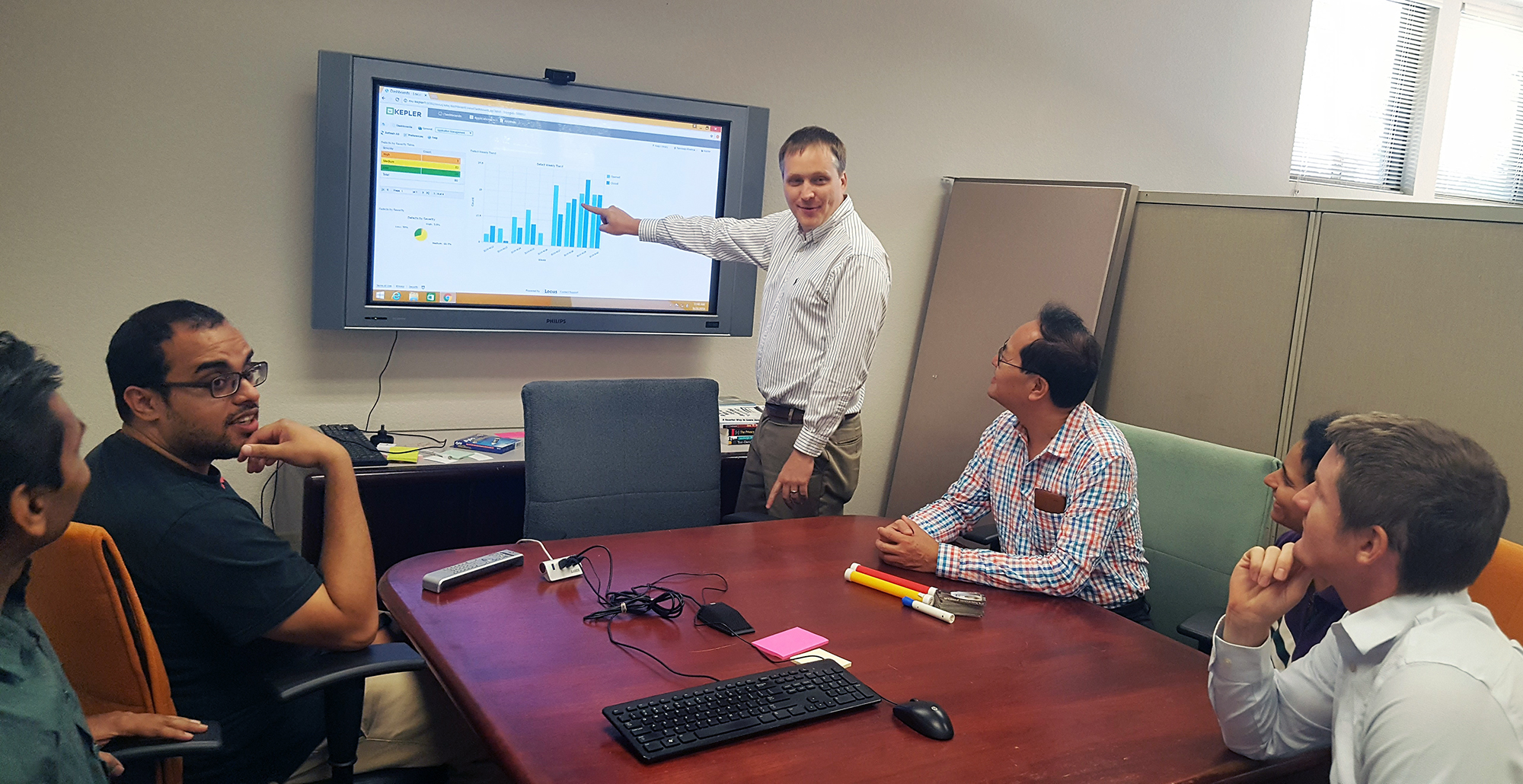 Mr. Hawthorne has been with Locus since 1999, working on development and implementation of services and solutions in the areas of environmental compliance, remediation, and sustainability. As President, he currently leads the overall product development and operations of the company. As a seasoned environmental and engineering executive, Hawthorne incorporates innovative analytical tools and methods to develop strategies for customers for portfolio analysis, project implementation, and management. His comprehensive knowledge of technical and environmental compliance best practices and laws enable him to create customized, cost-effective and customer-focused solutions for the specialized needs of each customer.
Mr. Hawthorne has been with Locus since 1999, working on development and implementation of services and solutions in the areas of environmental compliance, remediation, and sustainability. As President, he currently leads the overall product development and operations of the company. As a seasoned environmental and engineering executive, Hawthorne incorporates innovative analytical tools and methods to develop strategies for customers for portfolio analysis, project implementation, and management. His comprehensive knowledge of technical and environmental compliance best practices and laws enable him to create customized, cost-effective and customer-focused solutions for the specialized needs of each customer.
Mr. Hawthorne holds an M.S. in Environmental Engineering from Stanford University and B.S. degrees in Geology and Geological Engineering from Purdue University. He is registered both as a Professional Engineer and Professional Geologist, and is also accredited as Lead Verifier for the Greenhouse Gas Emissions and Low Carbon Fuel Standard programs by the California Air Resources Board.
MOUNTAIN VIEW, CA and LOS ALAMOS, N.M., 21 April 2022 —
A significant software improvement is driving enhanced decision-making on N3B Los Alamos’ environmental cleanup at Los Alamos National Laboratory (LANL).
Samples collected of soil, sediment, water and other parts of the environment potentially contaminated by historical LANL operations now receive faster and more comprehensive validation due to software tool improvements made by N3B and leading environmental software provider Locus Technologies.
The improved software functionality is part of a database containing all data associated with environmental cleanup at LANL. N3B implements the legacy portion of that cleanup on behalf of the U.S. Department of Energy’s Environmental Management Los Alamos Field Office. Legacy cleanup involves the remediation of contamination from Manhattan Project and Cold War era weapons development and government-sponsored nuclear research.
The software improvement ensures more thorough validation of results from third-party analytical laboratories that analyze collected samples for various contaminants, which may include metals, radionuclides, high explosives, and human-made chemicals used in industrial solvents, known as volatile organic compounds.
The types of contaminants potentially found in these samples, along with levels of contamination, guide N3B’s cleanup.
“Decisions on legacy environmental cleanup are based on the validity and quality of this analytical data, including the nature and extent of contamination, how much we clean up, and how well the interim remediation measure is working to mitigate migration of the hexavalent chromium groundwater plume,” said Sean Sandborgh, sample and data management director at N3B. “If you have lapses in the quality of analytical data, that could have negative effects on our program’s decision-making capacity.”
Once N3B personnel collect samples from potentially contaminated sites, they send them to a third-party laboratory for analysis. When N3B receives the results of those samples, they perform a validation process to demonstrate data is sufficient in quality and supports defensible decision-making.
“Validation consists of determining the data quality and the extent to which external analytical laboratories accurately and completely reported all sample and quality control results,” Sandborgh said.
The process can catch data quality issues that may result from incorrect calibration of equipment in a laboratory or issues inherent in the samples, such as improper preservation or temperature control, that mask detection of contaminants.
With the improved functionality, more of the validation process is automated, instead of manually conducted, which means a lower likelihood of errors.
Another crucial improvement is the ability to evaluate sample results containing radioactive material at lower activity concentrations, which provides quick information on the potential for low levels of radionuclide activity.
The improved functionality is also being used by LANL’s management and operating contractor, Triad, and will soon be used by the New Mexico Environment Department Oversight Bureau.
The software improvement saved N3B 265 hours of labor and more than $25,000 in taxpayer dollars since its launch nearly one year ago.
“As we’ve done for the past 25 years, Locus is committed to continually improving our solutions for the often costly and complex data review process,” said Locus Technologies President Wes Hawthorne. “We are proud to enable a data-forward approach with a focus on accuracy that results in confident and correct decisions.”
“The quality and defensibility of environmental data generated from sampling activities is a key component of an effective remediation process,” said Sandborgh. “When the automated data review is used in conjunction with manual examination of sample data packages, we meet and exceed our data quality requirements.”
ABOUT N3B Los Alamos
N3B manages the 10-year, $1.4 billion Los Alamos Legacy Cleanup Contract for the U.S. Department of Energy Environmental Management’s Los Alamos Field Office. N3B is responsible for cleaning up contamination that resulted from LANL operations before 1999. N3B personnel also package and ship radioactive and hazardous waste off-site for permanent disposal.
299 Fairchild Drive
Mountain View, CA 94043
P: +1 (650) 960-1640
F: +1 (415) 360-5889
Locus Technologies provides cloud-based environmental software and mobile solutions for EHS, sustainability management, GHG reporting, water quality management, risk management, and analytical, geologic, and ecologic environmental data management.
